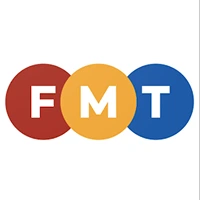
Malaysia received some well-deserved kudos for its hosting of the Asean Summit in Kuala Lumpur recently.
It would have been a perfect outing if not for some embarrassing moments for the media circle, which more likely left many red faces, too.
But like it or not, the history of publishing, and later broadcasting, is replete with gaffes — some hilarious, others dire.
As The Guardian’s first readers editor Ian Mayes famoulsy wrote in his debut column in 1997, “if anyone wanted to construct a machine for the production of error, a newspaper would probably be it”.
Rather than shy away from their slip-ups, The Guardian, the 204-year old British newspaper known for its left-leaning stance, has boldly taken ownership of those blunders, by bringing them to their readers’ attention. And there are plenty.
A report in early 2003 said the Royal Shakespeare Theatre would feature The Taming of the Screw. It must have raised the ire of the Shrew.
In another report years later, the Scottish indie rock band Frightened Rabbit was named “Frightened Rabbi”. God help them.
In a May 12, 2021 article, writer Elisabeth Ribbans, noted the newspaper misspelled the word “misspelled” twice, in its corrections column. That was unforgivable.
One of the most notorious must have been the Chicago Daily Tribune’s report on the results of the US presidential election in 1948. Its headline read “Dewey Defeats Truman”.
It turned out Harry S Truman had scored an upset victory over his opponent Thomas E Dewey. The Tribune had gone to press early — before the official results were announced — relying instead on various polls that showed Republican Dewey would win by a landslide.
One of the most embarrassing ones must have been the Valley News misspelling its own name on the masthead in one edition — it appeared as “Valley Newss”.
The editor did admit later that it was a rather silly mistake.
Another embarrassing episode must have been the headline by Times & Citizen, a weekly newspaper in the UK. It went to print with “headline headghgh” where the headline should have been in a June 2010 edition.
Newspaper sub-editors occassionally write a garbled line or two where the headline should be when they size up the page while looking for the appropriate words.
The sub-editor must have missed it when he signed off the page for off-stone.
For better or worse, the newspaper became a Twitter sensation.
Even the holy scriptures are not spared. In a 1631 edition of the King James Bible printed in England, one of the Ten Commandments appeared as “Thou shalt commit adultery”, erroneously leaving out the word “not”.
In another case, BBC newscaster Maryam Moshiri was caught on air showing her middle finger.
In Malaysia, a newspaper once reported in an early edition that a minister had been killed in a plane crash, only to find out from the authorities later that the said minister had walked out of the jungle very much alive.
Reporters, sub-editors and editors work under a lot of stress. When forced to read thousands of words on a daily basis, lapses are bound to happen.
Deadlines pile on the pressure, and errors slip by from time to time. Misspelled words, punctuations in the wrong places, and misleading headlines are aplenty. Of course this is not an excuse.
The advent of online media has made it possible for a correction to be made as soon as it is spotted, but for the print media, the error lasts an eternity.
While apologies came swiftly for the three Asean leaders mistaken for their predecessors, the errors will be etched in media history.
So to all scribes , thou shalt not err.
The views expressed are those of the writer and do not necessarily reflect those of FMT.






